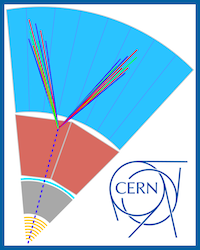Speaker
Description
In extended supersymmetric models with a hidden sector the lightest $R$-parity odd particle can reside in the hidden sector and act as dark matter. We consider the case when the hidden sector has ultraweak interactions with the visible sector. An interesting phenomenon arises if the LSP of the visible sector is charged in which case it will decay to the hidden sector dark matter. Due to the ultraweak interactions, the LSP of the visible sector will be long-lived decaying outside the detector after leaving a track inside. We investigate this possibility in the framework of a $U(1)_X$-extended MSSM/SUGRA model with a small gauge kinetic mixing and mass mixing between the $U(1)_X$ and $U(1)_Y$ where $U(1)_Y$ is the gauge group of the hypercharge. Specifically we investigate the case when the LSP of MSSM is a stop which decays into the hidden sector dark matter and has a lifetime long enough to traverse the LHC detector without decay. It is shown that such a particle can be detected at the HL-LHC and HE-LHC as an $R$-hadron which will look like a slow moving muon with a large transverse momentum $p_T$ and so can be detected by the track it leaves in the inner tracker and in the muon spectrometer. Further, due to the ultraweak couplings between the hidden sector and the MSSM fields, the dark matter particle has a relic density arising from a combination of the freeze-out and freeze-in mechanisms. It is found that even for the ultraweak or feeble interactions the freeze-out contribution relative to freeze-in contribution to the relic density is substantial to dominant, varying between 30% to 74% for the model points considered. It is subdominant to freeze-in for relatively small stop masses with relatively larger stop annihilation cross-sections and the dominant contribution to the relic density for relatively large stop masses and relatively smaller stop annihilation cross-sections. Our analysis shows that the freeze-out contribution must be included for any realistic analysis even for dark matter particles with ultraweak or feeble interactions with the visible sector. A discovery of a long-lived stop as the lightest particle of the MSSM may point to the nature of dark matter and its production mechanism in the early universe.




